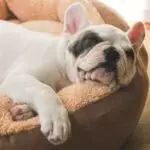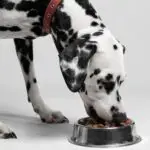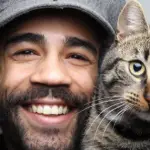Probiotics are extremely popular in the human health field and are now becoming increasingly utilized in pet diets. Here are five things to help you choose the right probiotic for your pup.

In general be effective make sure your pet’s probiotic meets the following standards
| The bacteria must be live (live, viable bacterial) |
| The probiotic should be highly potent |
| The probiotic should not contain any artificial colors, flavors, preservatives, sugar, corn wheat, soy, salt or other harmful and unnecessary ingredients |
| Multiple bacterial strains should be in your dogs probiotic |
| It should be formulated for dogs |
Choose the right form & taste
This goes without saying but since probiotics come in many different forms including tablets, powders, chews, and liquids it can be difficult to find an option that works best for you. Chews seem to be by far the more popular of the choices for dogs with powder following behind. You may have to do some trial and error to find out what your pup will tolerate.
There are also a variety of flavors to choose from including beef, chicken, and pumpkin.
Pick the right size
Yep, probiotics can come in different sizes and forms. Keep in mind if you have a pup that’s a bit hard to pill or if they are a finicky eater as well.
Skip diets with probiotics added
While it is okay to choose diets that have probiotics in them, it is best not to choose them solely based on this additive. Many studies including this one have shown that most foods don’t have either the strains or the number of strains listed on the packaging in the actual final product.
The article specifically states that “overall, commercial pet foods that claim to contain probiotics appear to contain very low numbers of viable organisms, and often do not contain the species listed on the label”.
So even if you are feeding a food with a probiotic you may want to consider supplementing.
Avoid probiotics with these additives
While it may be difficult to find a probiotic that avoids all of these items, try to steer clear of the ones that do.
- Yeast extract
- Fillers
- Maltodextrin
- Milk
- Startches
- Sugars or sucrose
- Artificial dyes or flavor
If you’re looking for a natural probiotic for your dog read our article here about four that we love!
Pay attention to the CFU’s
Watch the strains
Ideally you will want a probiotic with multiple strains of bacteria and you want them to be live and active bacterial cultures. So make sure you are reading the packaging closely.
The main strains found in most canine probiotics are:
- Lactobacillus genus: very good for dogs that may have recently been on antibiotics
- Bifidobacterium genus: helpful if your dog is suffering from diarrhea
- Enterococcus genus: good for replacement of beneficial bacteria that may have been lost
- Saccharomyces genus
If your current probiotic or the one you are looking at only has one genus of bacteria you will want to consider adding an additional probiotic or switching to one that has at least three strains.
Use a probiotic meant for dogs
While giving your dog human probiotics probably won’t do much harm, they may not do much good either. Dogs have different gastrointestinal makeup when it comes to pH, intestinal environment, and strains of bacteria in their microbiome and probably need probiotics that differ slightly.
There is much more research needed to determine the efficacy of human probiotics on dog health. In the meantime, you may want to stick to probiotics made specifically for dogs or you may just be throwing your money down the toilet (literally).
Opt for one with a Prebiotic
Prebiotics are plant fibers that actually feed the beneficial bacteria in your dog’s gut. Who knew, bacteria had to eat too!
Luckily many probiotics on the market now contain prebiotics. Alternatively, you can easily make and add your own prebiotic to your dog’s diet naturally.
Check the CFU’s
No, I didn’t just curse at you, CFUs stands for colony-forming units and according to the Chicago Tribune if your probiotic has less than 1 billion CFUs it can’t technically be classified as a probiotic.
CFUs speak to the concentration of bacteria in a serving of probiotics. Ideally, you want this number to be between five and 10 billion. 10 billion being optima as you want as many bacteria packed into the product as possible.
ALL ABOUT YOUR DOGS MICROBIOME & HOW TO CARE FOR IT
THE TOP FOUR ALL-NATURAL PROBIOTICS FOR DOGS IN 2020

Probiotics can sometimes help a dog with gastrointestinal issues, read about more over-the-counter medicines and products that can help with acute diarrhea in dogs here.

























































































































